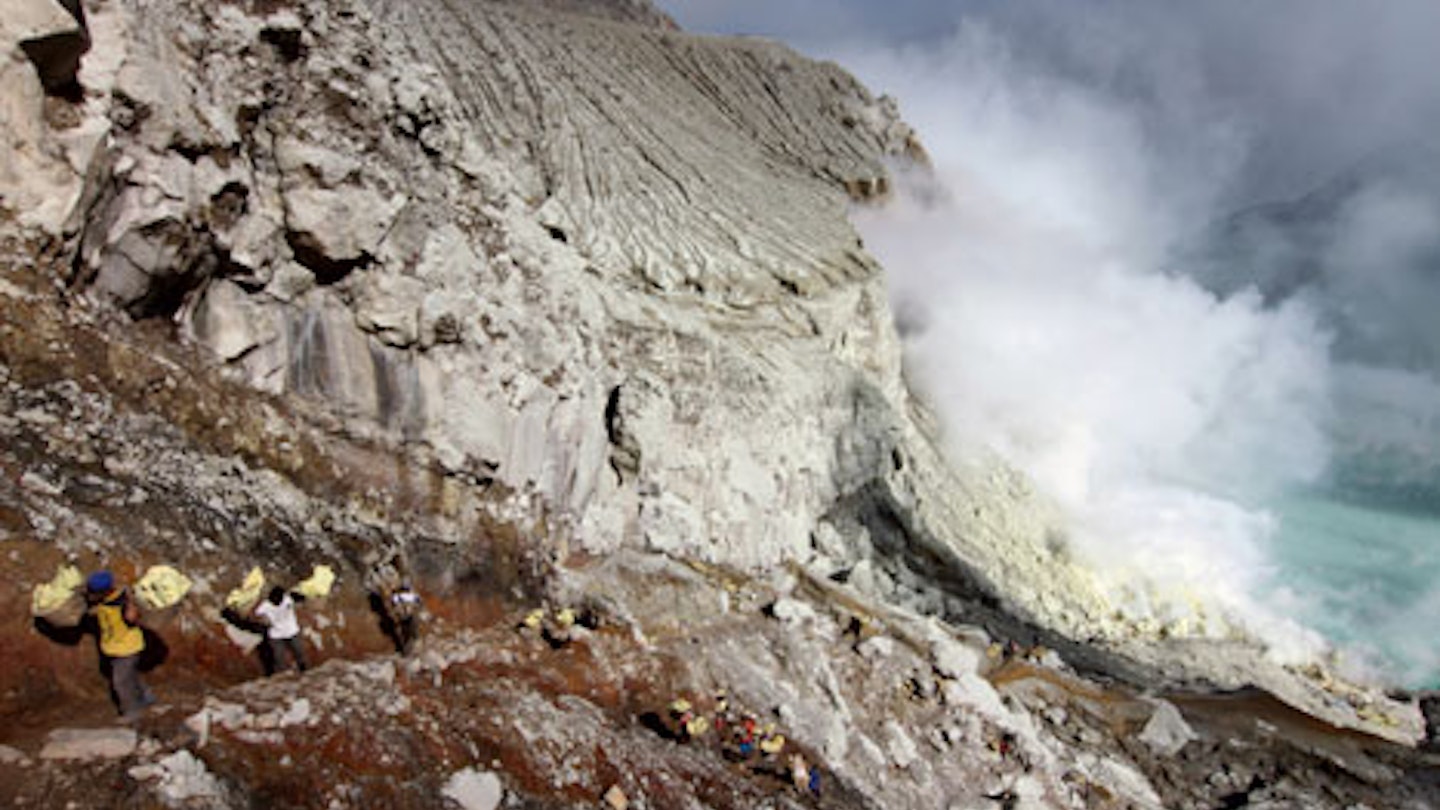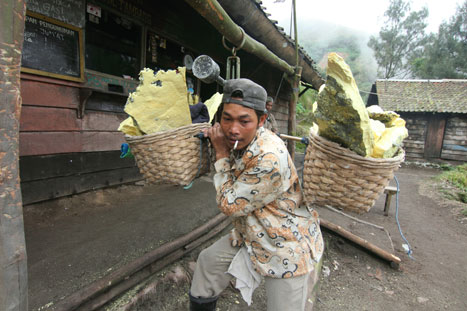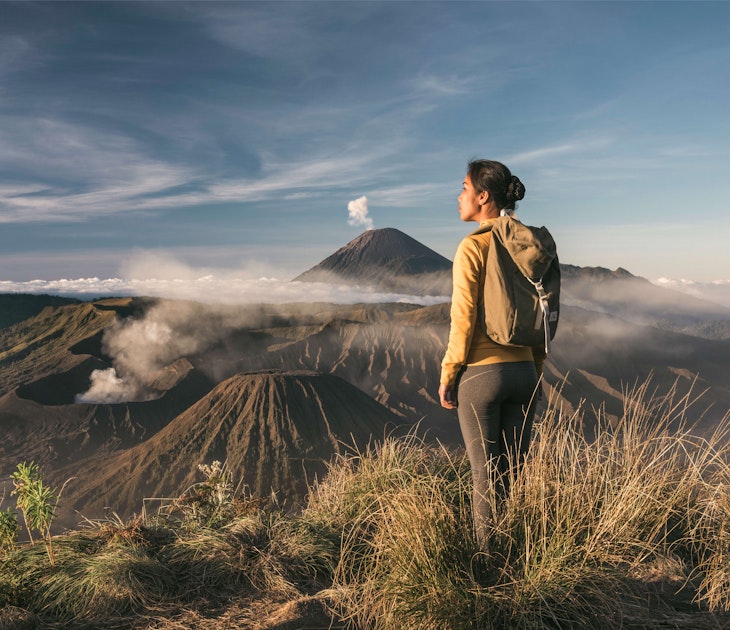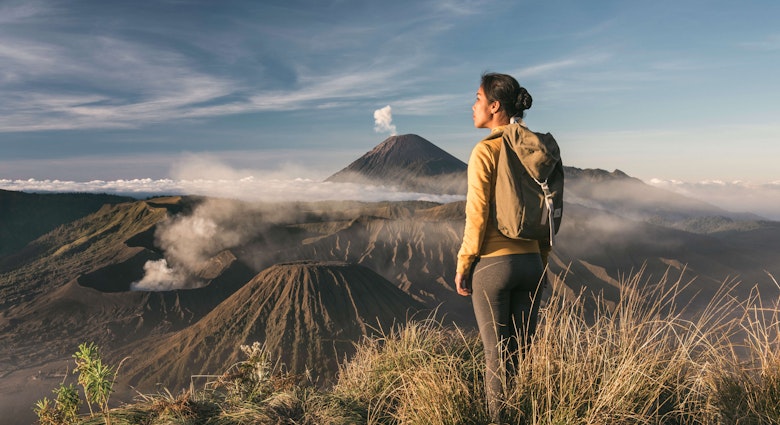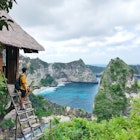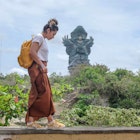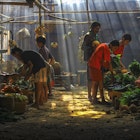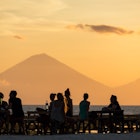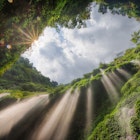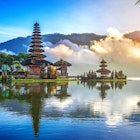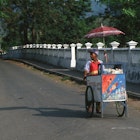Nobody in Europe had heard of the Ijen volcanic crater during the European Middle Ages, when painters were busy decorating churches and chapels with paintings depicting the gates of Hell. If they had, those artists would have needed no further inspiration: here is a real life Hell and it smells of sulphur.
I had come to the Ijen crater, on the Indonesian island of Java, to photograph what must be one of the world’s most demanding jobs - mining sulphur from inside the belly of an angry volcano.
Highly acidic lake and clouds beside a narrow trail inside the volcanic crater. Photo by Stuart Butler.
Deadly lake
Sitting in the heart of the Ijen crater is a sky-blue lake approximately one kilometre across. The colours of the lake contrast with the sterile moonscape of the rest of the crater, and at first glimpse you might think this a beautiful scene. In reality, the lake has the pH of car battery acid and will quickly turn a metal can into nothing but a fizzing, bubbling memory.
Around the edges of the lake is a series of vents where the volcanic gases escape. Local miners have placed ceramic pipes over these vents and as the gases travel down the pipes, they condense and turn into liquid sulphur. This quickly cools and solidifies. This bright yellow residue, used in cosmetics and medicines, is harvested by miners using only the most basic of tools.
A miner's load of sulphur is weighed at the station halfway down the mountain. Photo by Stuart Butler.
Mining the crater
It’s gruelling and poorly paid work. The crater rises 2148 metres above sea level and the average day for a miner starts hours before dawn when they make the long march to the crater rim. Once here, they wrap whatever protective material they have around their faces, descend down into the belly of the beast and begin to dig up the cooling sulphur. Each miner will load up to 90kg of sulphur into baskets which they carry back down the mountain on their shoulders to a weighing station where they will be paid by the kilo (the average basket load earns the miners about US$6-7).
An acid cloud engulfs a group of miners who run for cover. Photo by Stuart Butler.
Most miners make two trips up and down the mountain a day. It’s dangerous work: the fumes from the lake and the sulphuric clouds that drift constantly across the crater are highly acidic and yet, despite the risk to their respiratory systems, most of the miners have nothing but a dampened cloth tied over their mouth and nose. This gives little defence against the swirling death clouds that drift constantly across the crater floor. When engulfed by one of these, the miners cough, retch and can do nothing but wait until the acidic cloud passes them by.
Crater tourism
Ways to modernise the industry have been suggested, but the miners protested out of fear of losing their precarious income. Today that meagre income has been slightly bolstered in the most unlikely of ways. Domestic and foreign tourists have started to travel to Ijen to admire the beauty of the surrounding fertile hills and, most importantly, to witness first-hand the life of the Ijen sulphur miners.
Sulphur miners creep down a narrow trail into the heart of the volcanic crater. Photo by Stuart Butler.
Pick and choose the chapters you need from Lonely Planet's Indonesia travel guide - download it now.
